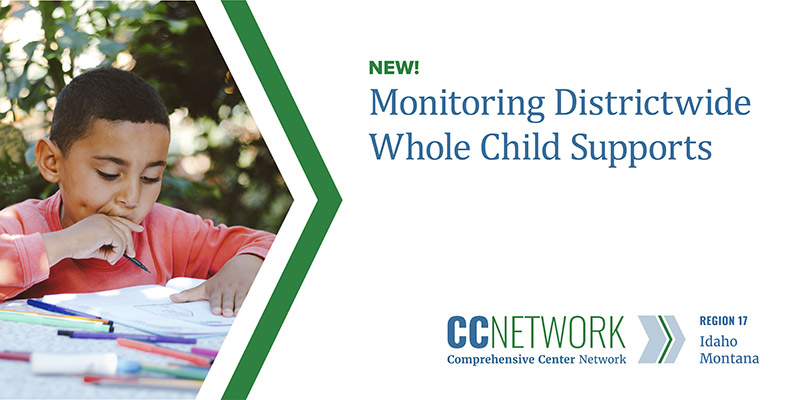
November 2022
Learning is kinetic, and students learn best in supportive learning environments that encourage strong relationships between peers, adults, and academic content.1 To better develop these environments, educational settings can incorporate a whole child approach that encompasses well-being, academic, and life skill development. However, whole child support systems are dynamic and broad, making them difficult to monitor and identify key areas for improvement.
To support schools and districts to better implement whole child systems, Region 17 Comprehensive Center and the Idaho State Department of Education developed the Well-Being, Academic, and Life Skill Development (WALSD) District Self-Assessment. The tool supports districts, regardless of their current level of implementation, by including measures for four stages of implementation: exploration, planning, initial implementation, and full implementation. For each stage, the WALSD self-assessment uses active implementation stages, drivers, and examples of policy-practice feedback loops and organized implementation supports to help districts identify current practices and areas of growth. Whether a district is looking to begin building supports or improve ongoing implementation, the self-assessment will point to next steps for promoting a positive learning climate; supporting adult learning; and engaging students, families, and communities in their learning environments.
Using the WALSD Self-Assessment
The WALSD self-assessment is designed to meet districts wherever they are along an implementation continuum. Districts beginning their journey in refining their whole child support system may start with the foundational section of the self-assessment. In this stage, districts may be understanding current aligned efforts and building system capacity to support WALSD.
Districts at more advanced stages may choose to start with the implementation section to build adult skills in understanding and implementing the district’s WALSD vision. This provides opportunities to advance and scale up effective strategies and resources to encourage consistency across the district.
When using this self-assessment, we recommend engaging a team of educators, leaders, and community members who are invested in whole child supports and district success to collaboratively reflect and plan. The team should discuss each element of the WALSD self-assessment together to determine what evidence is available in the district to support given ratings. This type of authentic engagement can support the widespread buy-in needed to successfully transform district WALSD efforts for the better.
If you are looking for ways to improve district supports for high-quality WALSD for all students, use the rubric to identify and plan ways you can engage in this work—no matter the stage of implementation. Contact us for assistance or additional ideas and strategies.
References
1 1 Darling-Hammond, L., & Cook-Harvey, C.M. (2018). Educating the whole child: Improving school climate to support student success. Learning Policy Institute.